During an 18-hole round, you’ll walk 4-6 miles and spend hours on your feet. Poor sock choices lead to blisters, fatigue, and distractions that hurt your game. The right golf socks wick sweat, prevent blisters, and reduce fatigue – making them more important than most golfers realize.
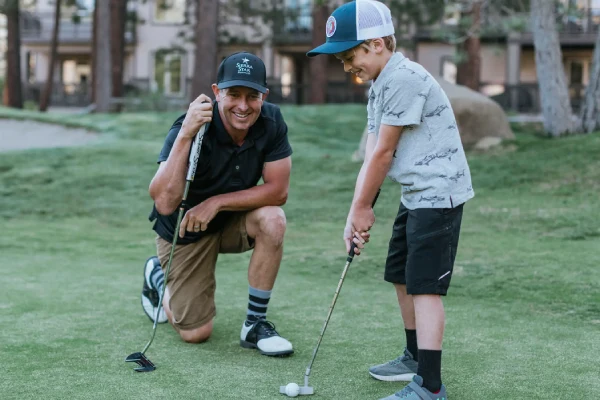
What Is the Difference Between Golf Socks and Normal Socks?

At first glance, golf socks may resemble regular everyday socks. But when your customers spend 4–6 miles walking across 18 holes, the difference becomes obvious. For retailers and sourcing managers, understanding the technical differences can help ensure better product-market fit—and fewer complaints.
Key Differences That Matter for Performance:
- Fabric Focus:
Everyday socks often prioritize comfort or fashion, while golf socks focus on moisture-wicking and breathability. Polyester, nylon, and cotton blends with mesh panels or technical yarns are typical to keep feet dry and blister-free during long play. - Targeted Cushioning:
Golf socks feature strategic padding at pressure zones—like the heel and forefoot—where players need support. Ordinary socks usually provide uniform thickness, which may lead to hotspots or fatigue during a round. - Fit & Compression:
Golf socks are designed to stay in place. Many include arch support bands or mild compression around the midfoot and cuff to reduce slippage and improve circulation. In contrast, standard socks tend to stretch out faster and lack this kind of construction. - Length Considerations:
Golfers often choose mid-calf or crew-length socks for ankle protection, especially when wearing spiked or structured shoes. Everyday socks come in various lengths, but lack the functional focus of shielding the ankle from irritation during repetitive movement. - Reinforced Durability:
Golf socks are built for wear. Reinforced heels and toes help them hold up over multiple games and washes, while regular socks may thin out or lose shape more quickly when worn for sports.
This distinction matters when you’re developing product lines for golfers or sportswear consumers. Choosing the right materials and features leads to better sell-through, fewer returns, and stronger brand reputation.
Why Material Matters

Synthetic Performance Fabrics (Polyester/Acrylic)
These excel at moisture-wicking and dry quickly. Sports medicine research shows synthetics absorb far less moisture than cotton, making them ideal for active golf.
Merino Wool Blends
Naturally wicks moisture, resists odors, and regulates temperature. Keeps feet cool in summer heat and warm in cold conditions. Often blended with synthetics for enhanced durability.
Avoid 100% Cotton
Cotton retains three times more moisture than synthetics, holds dampness longer, and creates perfect conditions for blisters. Skip it entirely for golf.
Key Features That Define High-Quality Golf Socks
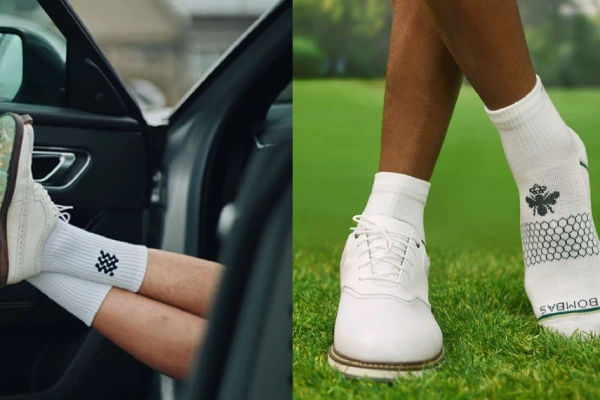
Moisture-Wicking Technology
Pulls sweat away from skin to the sock’s outer surface where it evaporates, keeping feet dry and preventing hot spots.
Strategic Cushioning
Targeted padding in the heel, ball of foot, and arch absorbs shock during long walks and reduces fatigue.
Compression and Arch Support
Built-in arch bands and graduated compression improve circulation and provide stability. Studies show 86% of golfers experience less leg fatigue with compression socks.
Blister Prevention
Seamless toe construction and reinforced heel tabs eliminate pressure points and prevent chafing.
Breathable Zones
Mesh panels allow hot air to escape, crucial for summer rounds.
Golf Sock Length Guide: Matching Sock Styles with Conditions
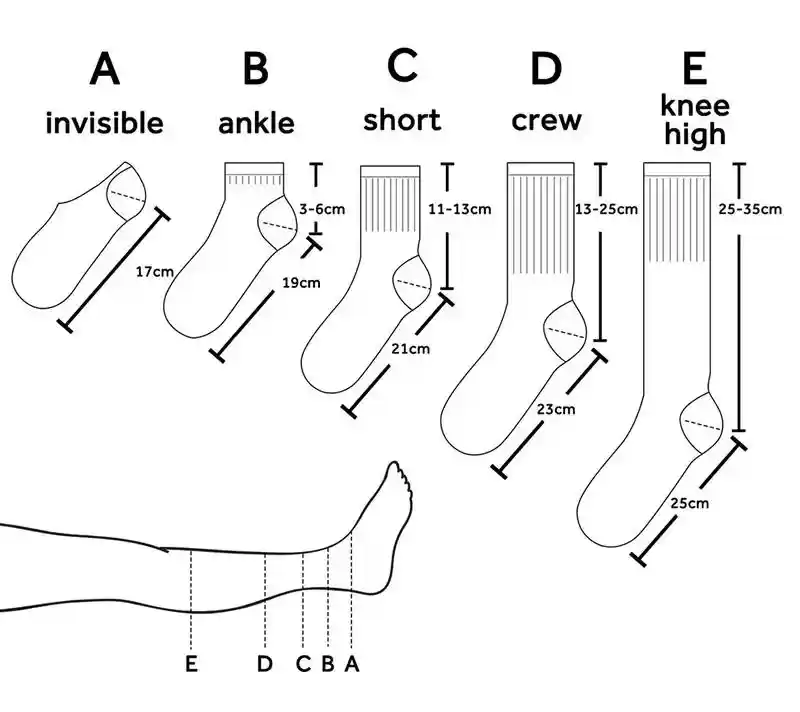
Crew Socks: Mid-calf length, ideal for cold weather and traditional dress codes
Quarter-Length: Ankle-height versatility for most conditions
No-Show/Low-Cut: Hot weather preference, stays hidden below shoe line
Golf Tab Socks: Low profile with heel tab for security and blister prevention
Meeting Golf Dress Codes with the Right Socks
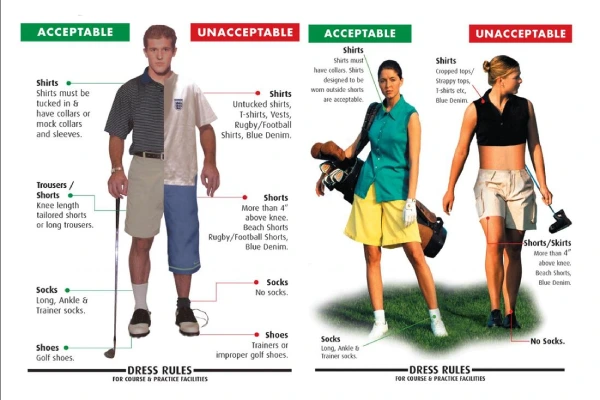
Golf socks aren’t just about comfort—they also need to follow course dress codes, especially in the U.S., Europe, and Japan.
Many courses require visible socks when wearing shorts. In Japan, long socks are mandatory. Some European clubs also expect socks to show above the ankle. In the U.S., rules are more relaxed, but crew or quarter-length socks remain the safer choice at private clubs.
Can golfers wear high socks?
Yes. Knee-high and mid-calf golf socks are not only allowed but often preferred at traditional clubs, especially in Japan and parts of Europe. Some players also choose them for extra support or a classic look.
What to avoid with golf socks:
- No-show styles at formal clubs
- Neon colors or loud patterns
- Oversized logos
- Mismatched colors that clash with shoes or outfits
For brands and retailers, the key is offering a range of sock lengths in subtle, golf-appropriate designs. Moisture-wicking crew socks in white, gray, or navy suit most needs. For traditional markets, knee-high argyle styles are still in demand.
How to Care for Golf Socks: Washing Tips and Longevity Advice
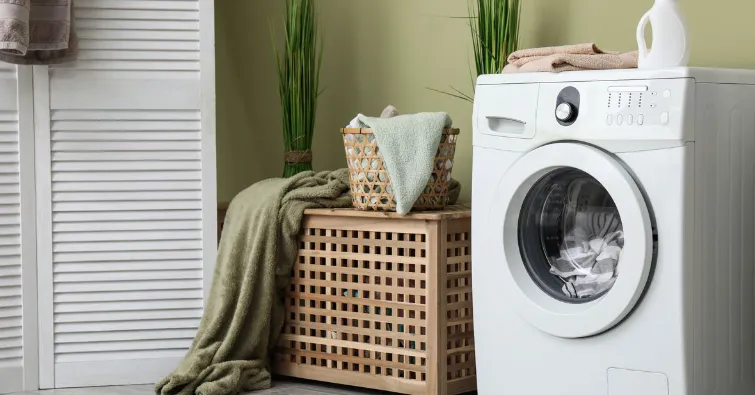
Wash in cold water, avoid fabric softeners (they reduce moisture-wicking), and air dry when possible. Keep multiple pairs in rotation and consider spare socks in your golf bag for long days or weather changes.
Getting Golf Socks Right for Your Customers
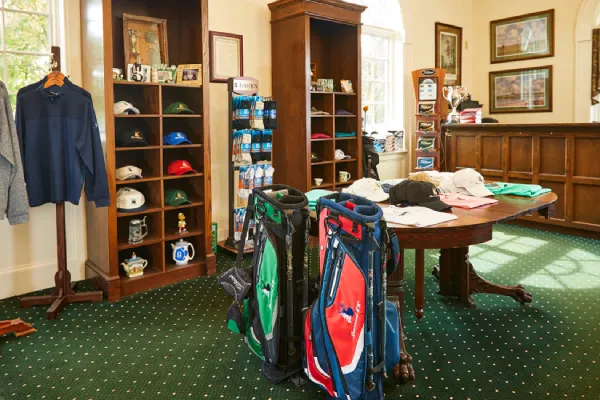
Modern golf sock technology has evolved far beyond basic cotton tube socks. With proper selection based on weather, playing style, and foot needs, players can eliminate common comfort issues and focus entirely on the game.
Premium golf socks blend advanced materials with features like targeted cushioning, arch support, and moisture management. While hidden inside your shoes, their impact on comfort and performance is significant. Whether you choose synthetic socks for hot weather, wool blends for cold conditions, or compression socks for walking rounds, investing in quality golf socks is a small change that makes a big difference.
Ready to offer your customers premium golf socks that deliver real on-course comfort? Contact us to start customizing for your brand.
FAQs of Golf Socks
Q: Should I choose synthetic or wool golf socks?
Both work well for golf. Synthetics excel in hot weather and dry quickly, while merino wool provides excellent temperature regulation and odor resistance. Choose based on climate and personal preference.
Q: Are compression socks worth it for recreational golfers?
Yes, especially for walking golfers. Studies show 86% of golfers experience less leg fatigue with compression socks, and they help reduce swelling during long rounds.
Q: What sock length is best for golf?
It depends on weather and dress codes. Crew socks for cold weather and traditional courses, no-show for hot weather, and quarter-length for versatility across conditions.
Q: How do I prevent blisters with golf socks?
Choose moisture-wicking materials, ensure proper fit, look for seamless toe construction, and consider socks with heel tabs. Avoid cotton, which retains moisture and increases blister risk.
Q: Can I wear regular athletic socks for golf?
While possible, golf-specific socks offer targeted features like arch support, strategic cushioning, and materials optimized for the unique demands of walking and pivoting during golf swings.
